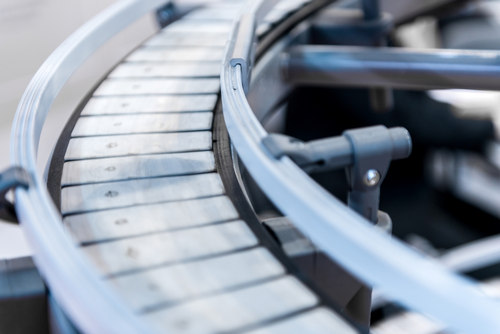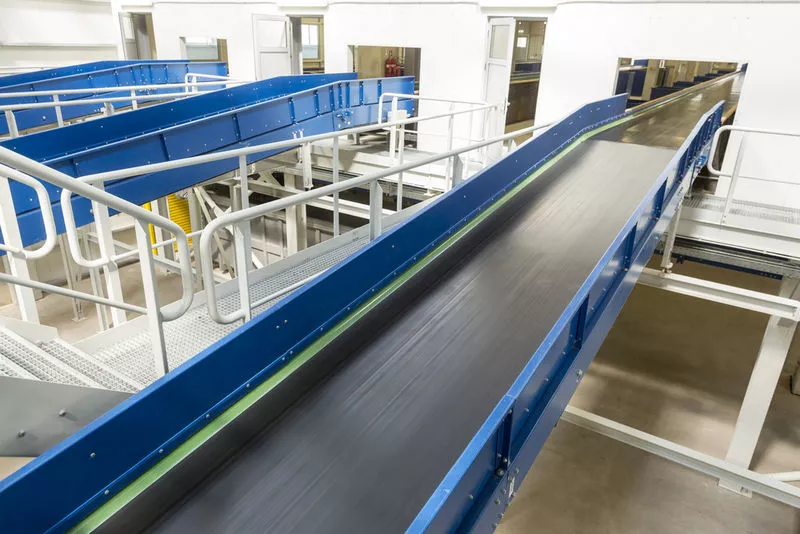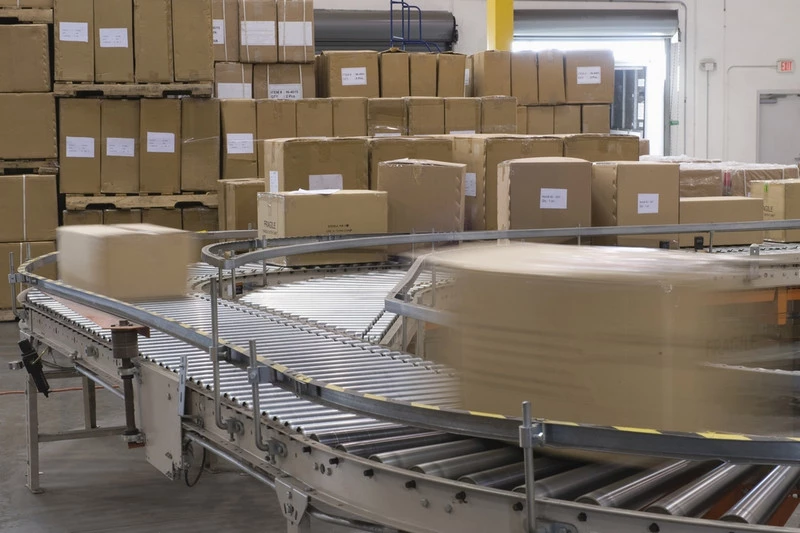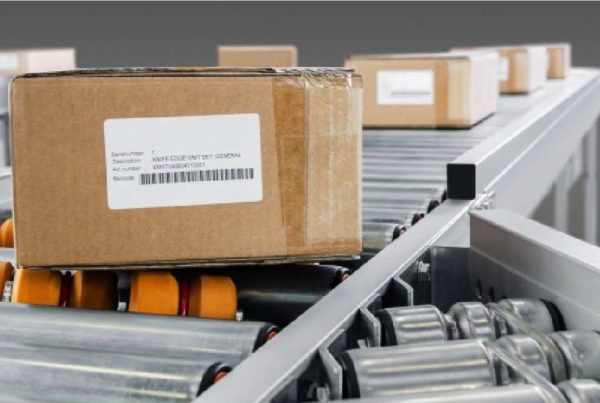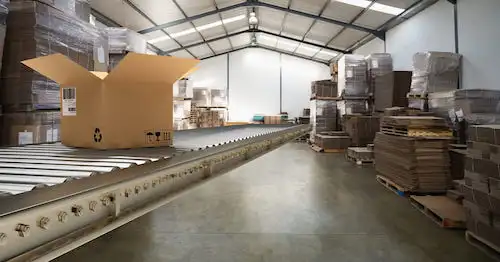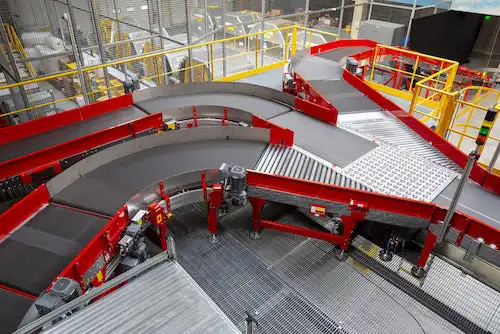Live roller conveyor systems have slowly become the “MVP” of many warehouses. They shine when it comes to proving efficiency and effectiveness in different industries. Live roller conveyor systems make material handling much more intuitive, simplified, and incredibly fast. They are robust systems that improve your overall operation, giving you quick technological tools designed to make your life easier.
In this article, we’ll to talk about what a live roller conveyor system is, how it works, and typical applications for it.
Live roller conveyor definition
Live roller conveyor systems, or simply conveyor systems, are structures that utilize evenly spaced rollers on rotating cylinders and allow you to move items from one place to the other. They transport materials from point A to point B by using either gravity or implemented small motors. They are iconic systems and are ideal for multiple applications.
Since, in essence, the design is extremely simple, warehouses can derive multiple advantages out of live roller conveyor systems. This allows them to keep up with industry standards and changes.
The typical application of such systems is the sorting and movement of material around the warehouse. Live roller conveyor systems are high-speed sorting machines that have become the norm in most supply chains.
The biggest innovation in this system is the fact that it has incorporated motors. The belt, chain, or shaft is connected to a small motor which gives the operator more control over the entire system. This means they can manage the pathway, speed, and even the thrust of its operations. It also equates to the fact that live roller conveyor systems can now work bi-directionally – they can transport items in reverse as well move materials at an angle – high to low elevation.
Types of Live Roller Conveyor Systems
There are many live roller conveyor designs out there. In the following section, we’ll describe each one, highlighting their major features, how they overlap with each other, and their costs. Also, it’s important to note that most conveyor systems are a mix of multiple designs and there isn’t a pre-set grouping. Why? It depends on the manufacturer and their engineers — each brand has its own take on its live roller conveyor systems models. SRSI designs conveyor layouts that meet your unique operational needs.
Gravity Roller Conveyor System
This is by far the simplest live roller conveyor system on the list. It’s also the most affordable and easiest to implement. A gravity roller conveyor system is a small frame, sort of like a perpendicular ladder, that holds free-wheeling rotating rollers. The system uses gravity to slide materials down the line.
These types of systems don’t require a motor, are extremely economical, and carry light to medium weight products. They aren’t the most versatile, but they get the job done. They can be purchased with accessories like curves, pop-ups, supports, slide rails, and many other add-ons. They are oftentimes made out of steel, plastic, or aluminum.
Belt Driven Live Roller Conveyor
A belt-drive conveyor system employs a motorized belt to power each of the rollers. This allows the operator the ability to control the direction of materials being transported. They are generally preferred over gravity conveyors because items can be stopped momentarily at different checkpoints. Belt drive conveyor systems are often used for medium to heavy loads.
There are also much more complex and delicate systems. For example, the rubber belt under the roller must not encounter any moisture or excessive heat — such conditions may quickly hurt the system and damage it.
Chain Driven Roller Conveyor
Similar to the belt-driven conveyor, this system utilizes motors to move an object around. The main difference is that a chain-driven live roller conveyor implements a chain instead of a belt to power each roller. They are mainly used for heavy-duty transporting and where adverse conditions, like excessive heat or cold, are present.
Power transmission is high in these designs, and they need constant maintenance. They are best suited for places or warehouses located in geographical regions of extreme temperatures.
What to consider when purchasing a live roller conveyor system
It’s important to understand your operation from top to bottom. Not only what type of materials and load you’ll be transporting but also their size and composition. Some rollers are coated in plastic to increase friction, for example, which is great for fragile items but needs more maintenance as they start to wear off.
The best advice we can give you is to plan out your whole operation and contact a specialist, like SRSI. Something as small as your region’s temperature, the temperature of your warehouse or distribution center, and air quality to name a few, can have major impacts on your live roller conveyor system. Experts and design engineers at SRSI are ready and eager to help you navigate the factors to consider when choosing the type of conveyor for your operations. Get in touch with us today to get started: (833) 228-6902.
 Skip to main content
Skip to main content

